Picture this: You're lounging on a sun-kissed beach, savoring the tranquility of a well-deserved vacation, and suddenly, your chronic pain seems to vanish into thin air. Yet, as soon as you return home, it resurfaces with a vengeance. What sorcery is at play here? In this blog, we delve into the fascinating phenomenon known as the "holiday effect" to unravel the mysteries behind why pain disappears during holidays, only to reappear upon returning home.
1. Stress Relief and Pain Reduction:
Holidays provide a much-needed break from the daily grind, offering a respite from stressors that can exacerbate pain. Reduced stress levels during holidays can lead to relaxation, improved mood, and decreased perception of pain.
2. Change in Routine and Environment:
Stepping out of your usual environment and routine during holidays introduces novelty and distraction, diverting attention away from things that usually irritate you. Engaging in new activities, exploring unfamiliar surroundings, and breaking away from daily habits can contribute to pain relief.
3. Mind-Body Connection:
The mind plays a significant role in pain perception, and holidays offer an opportunity to reset and recalibrate the mind-body connection. Positive emotions, such as joy, excitement, and contentment experienced during vacations, can trigger the release of endorphins and other feel-good neurotransmitters, providing natural pain relief.
4. Lifestyle Factors:
Holidays often entail a shift in lifestyle habits, including changes in diet, increased physical activity, and more restful sleep. These lifestyle modifications can have a profound impact on overall well-being and pain management.
5. Returning to Reality:
As the holiday euphoria fades and you return to the familiar routines and stressors of daily life, the protective shield of relaxation and distraction dissipates. The resumption of work responsibilities, household chores, and other obligations can reignite stress levels, exacerbating pain once again.
So what's the take home...? If you've experienced the "holiday effect", it's likely that there is something in your day to day lifestyle (or multiple things in your lifestyle) that act as a sensitiser. This could be negative emotions, sustained postures, stress/anxiousness, your diet, or simply your environment.
If it goes away when you're away, then is it really an injury? Ask yourself... What in my lifestyle could be contributing to my problem? Now, start chipping away.

